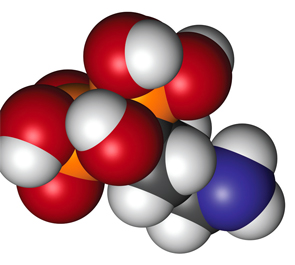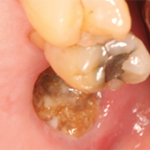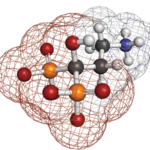
molekuul_be/shutterstock.com
A task force of the American Society for Bone and Mineral Research (ASBMR) has released new recommendations delineating the potential benefits and risks of prolonged therapy with oral and IV bisphosphonate therapy and providing guidance on duration of bisphosphonate therapy for postmenopausal osteoporosis.1
The task force makes clear that data and clinical experience on which to base the recommendations are limited and that the approach for long-term bisphosphonate therapy use is based on evidence in mostly white postmenopausal women. Task force co-chairs Robert A. Adler, MD, and Ghada El-Hajj Fuleihan, MD, told The Rheumatologist, “Despite all the research in osteoporosis, our knowledge base for long-term management of this common chronic disorder is very limited.”
Dr. Adler is chief of endocrinology and metabolism at McGuire Veterans Affairs Medical Center and professor of internal medicine at Virginia Commonwealth University School of Medicine in Richmond; Dr. El-Hajj Fuleihan is professor of medicine and founding director of the Calcium Metabolism and Osteoporosis Program at the American University of Beirut, Lebanon. The task force comprised experts in osteoporosis management, epidemiology, endocrinology, geriatrics and drug surveillance, a bone scientist not in the osteoporosis field and an ethicist.
Chief among the recommendations given in the report, Managing Osteoporosis in Patients on Long-Term Bisphosphonate Treatment: Report of a Task Force of the American Society for Bone and Mineral Research, is that a patient’s risk should be reassessed after five years of oral bisphosphonate therapy or three years of intravenous (IV) zoledronic acid therapy. Women at high risk, such as older women, those with a low hip T-score (less than or equal to -2.5) or high fracture risk score, those with a previous hip or spine fracture, or those who sustain a major osteoporotic fracture while on therapy, can be considered for treatment for up to 10 years of oral therapy or six years of IV therapy, with periodic evaluation, according to the recommendations.

Dr. Bolster
“This recommendation reinforces the idea that the purpose of therapy is to reduce fracture, while also reflecting the lack of long-term fracture efficacy using these drugs and the long-term retention in bone,” Drs. Adler and El-Hajj Fuleihan told The Rheumatologist.
“Based on a benefit/risk ratio approach, the Task Force recommends treatment for the person at high risk for fracture at baseline and continued treatment for up to 10 years in those who are still at such risk three to five years after initiation of therapy. The tools to assess fracture risk are limited, and periodic assessment is based on clinical information, physical examination and DXA [dual-energy X-ray absorptiometry] measurements to stratify risks,” they say.


